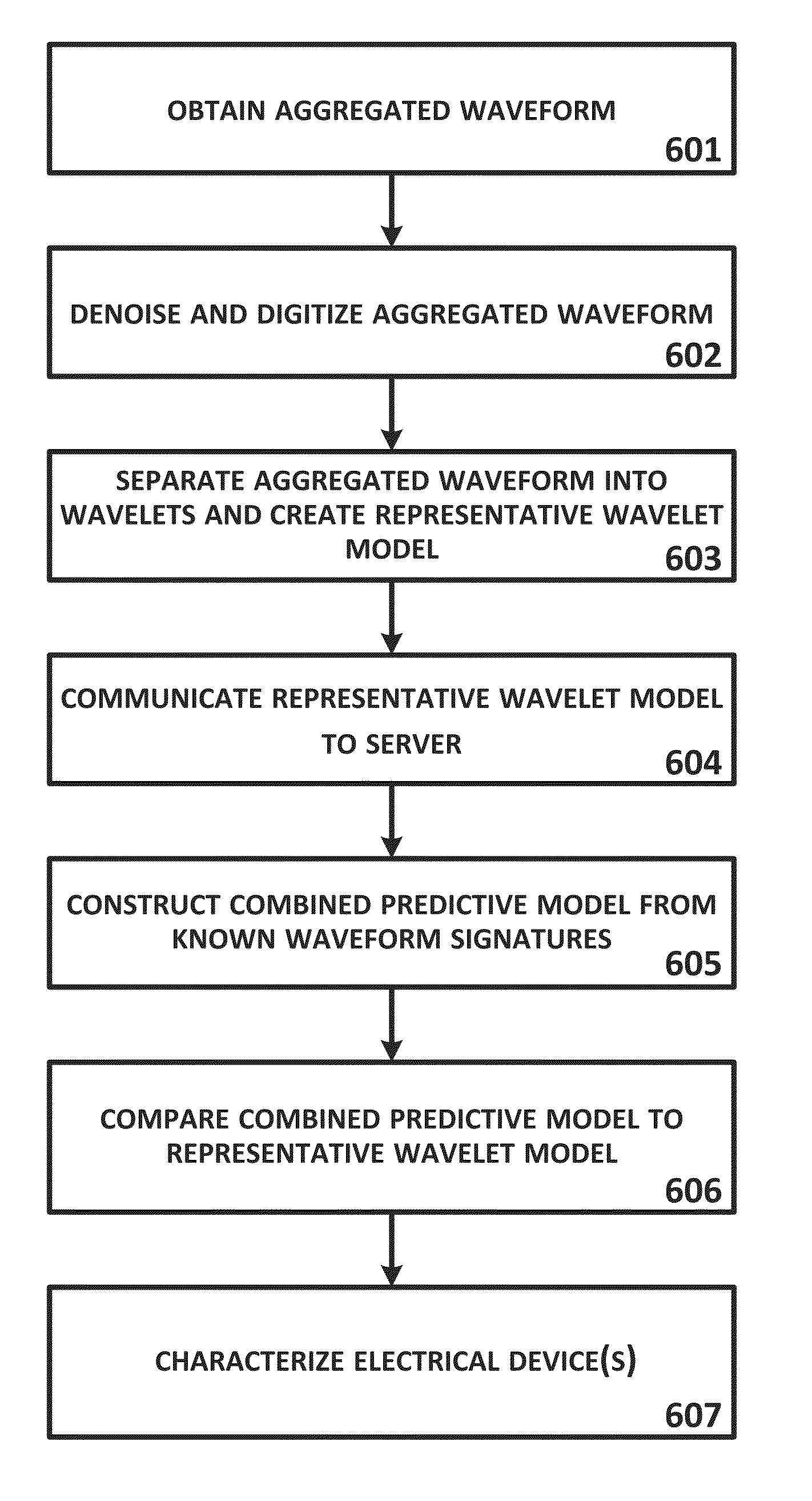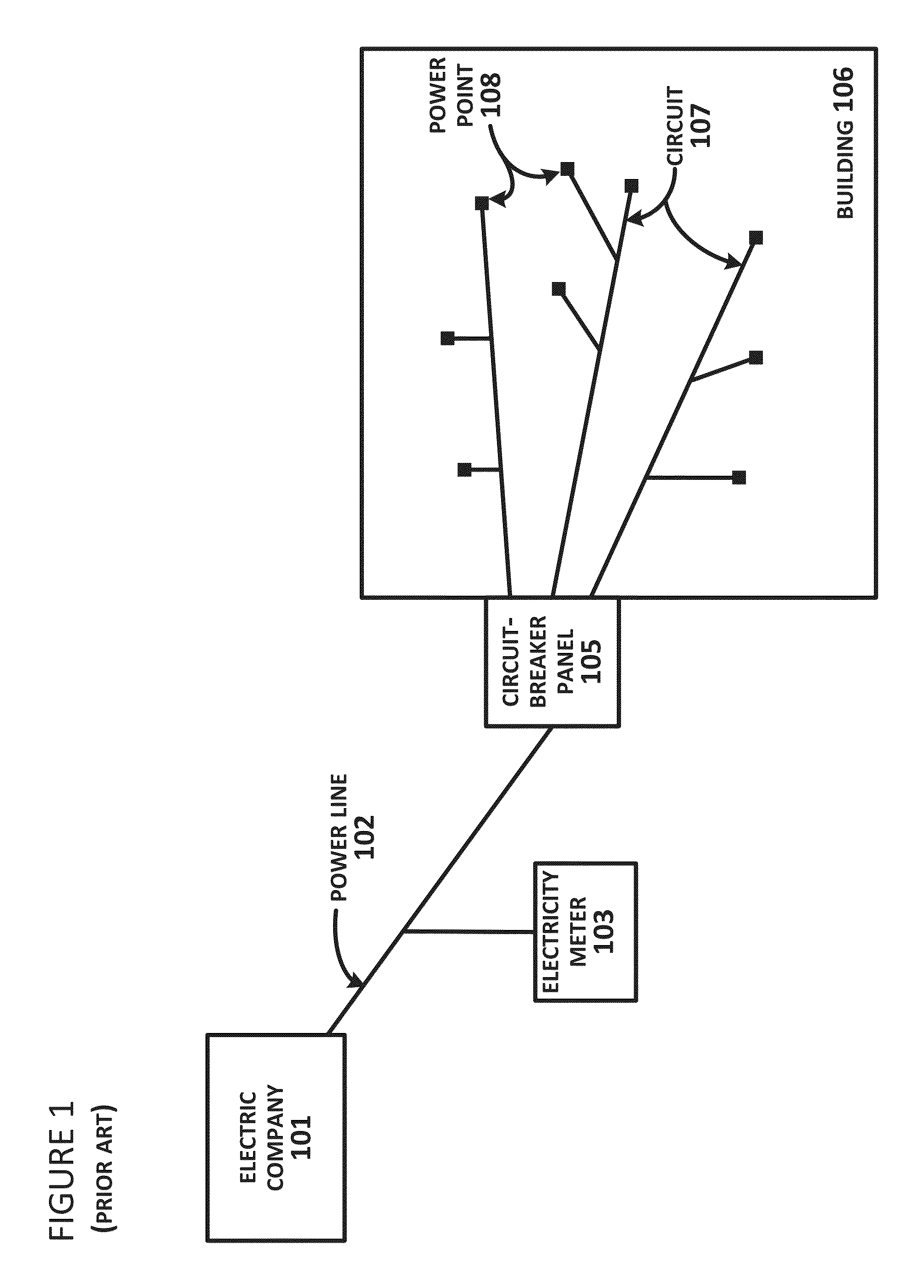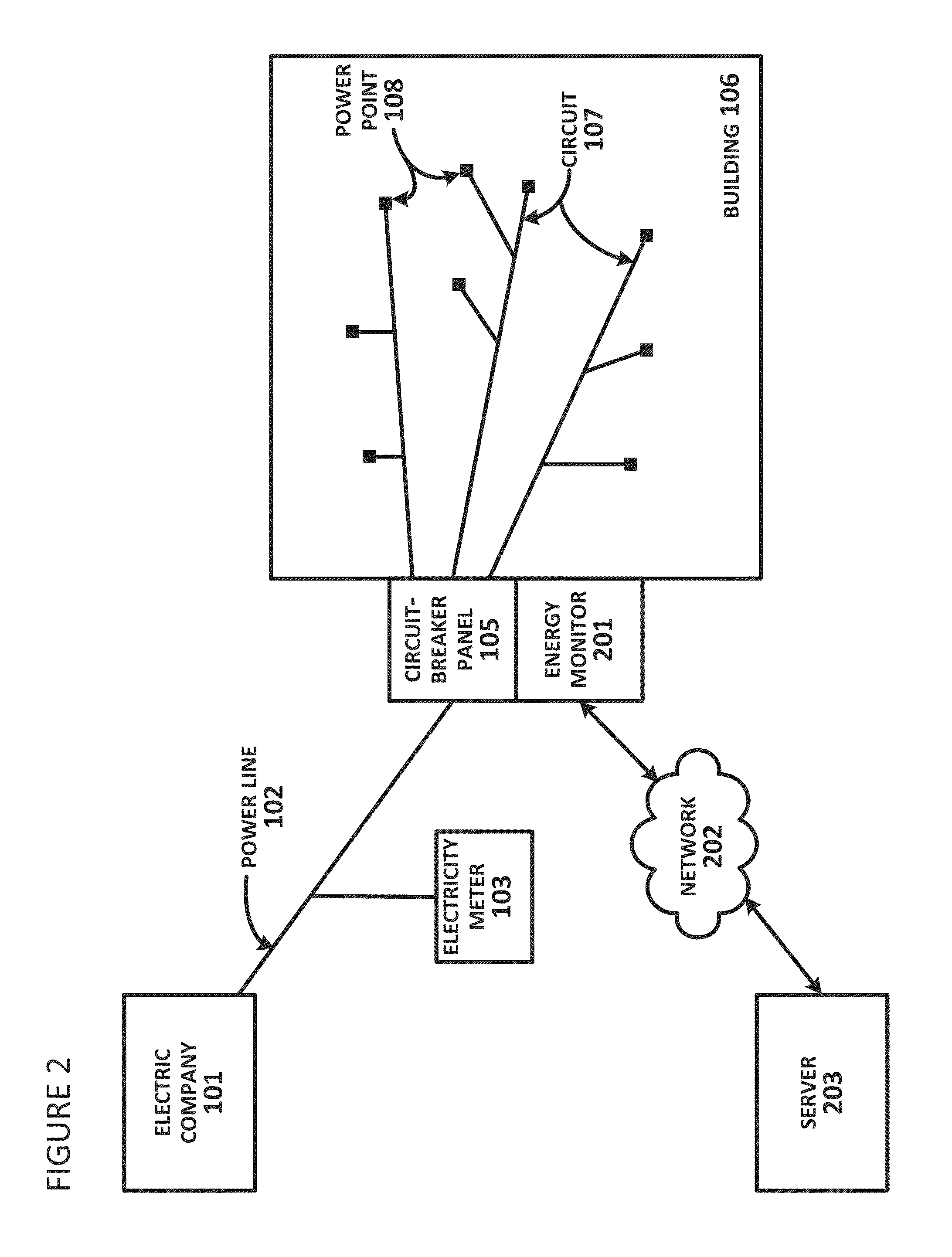System and Method of Waveform Analysis to Identify and Characterize Power-Consuming Devices on Electrical Circuits
a waveform analysis and power-consuming device technology, applied in the field of electricity metering, can solve problems such as limited typical smart meters
- Summary
- Abstract
- Description
- Claims
- Application Information
AI Technical Summary
Benefits of technology
Problems solved by technology
Method used
Image
Examples
Embodiment Construction
[0023]The system and method described herein measure from a current flow through a building electrical circuit to which one or more electrical device is connected. The measured current flow is processed to determine a representative model of the current flow through the electrical circuit (a “representative wavelet model”), and the model is then compared against a predictive model (a “combined predictive model”) built from waveform signtures from known electrical devices. If the models match, the one or more electrical devices connected to that building circuit can be characterized to identify the electrical device(s) operating on the electrical circuit, its / their operating mode, and / or its / their performance state. This information can be used to manage building energy usage, minimize energy costs, and detect failing components of electrical device failures (thereby allowing maintenance, repair, and / or component replacement before a more costly device failure event).
[0024]A block di...
PUM
 Login to View More
Login to View More Abstract
Description
Claims
Application Information
 Login to View More
Login to View More - R&D
- Intellectual Property
- Life Sciences
- Materials
- Tech Scout
- Unparalleled Data Quality
- Higher Quality Content
- 60% Fewer Hallucinations
Browse by: Latest US Patents, China's latest patents, Technical Efficacy Thesaurus, Application Domain, Technology Topic, Popular Technical Reports.
© 2025 PatSnap. All rights reserved.Legal|Privacy policy|Modern Slavery Act Transparency Statement|Sitemap|About US| Contact US: help@patsnap.com



